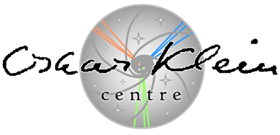Speaker
Dr
Juan de Dios Zornoza
(IFIC)
Description
The ANTARES neutrino telescope was completed in 2008 after the installation of its
twelfth line. Its scientific scope is very broad, but the two main goals are the
observation of astrophysical neutrino sources and the indirect detection of dark
matter. The latter is possible through the detection of neutrinos produced after the
annihilation of WIMPs, which would accumulate in sources like the Sun, the Earth or
the Galactic Centre. The neutralino, which arises in Supersymmetry models, is one of
the most popular WIMP candidates. Kaluza-Klein particles, which appear in Universal
Extra Dimension models, form another one. Although in most models neutrinos would not
directly be produced in these annihilations, they are expected from the decay of
secondary particles. An important advantage of neutrino telescopes in general with
respect to other indirect searches (like the detection of gamma rays) is that a
potential signal (for instance from the Sun) would be very clean, since no other
astrophysical explanations (like pulsars) could mimic it. A specific advantage of
ANTARES is its location in the Northern Hemisphere, which allows for detection of
neutrinos from the Galactic Centre. In this talk I will present the results of the
ANTARES telescope for dark matter searches, which include neutralino and KK particles.
Primary author
Dr
Juan de Dios Zornoza
(IFIC)

